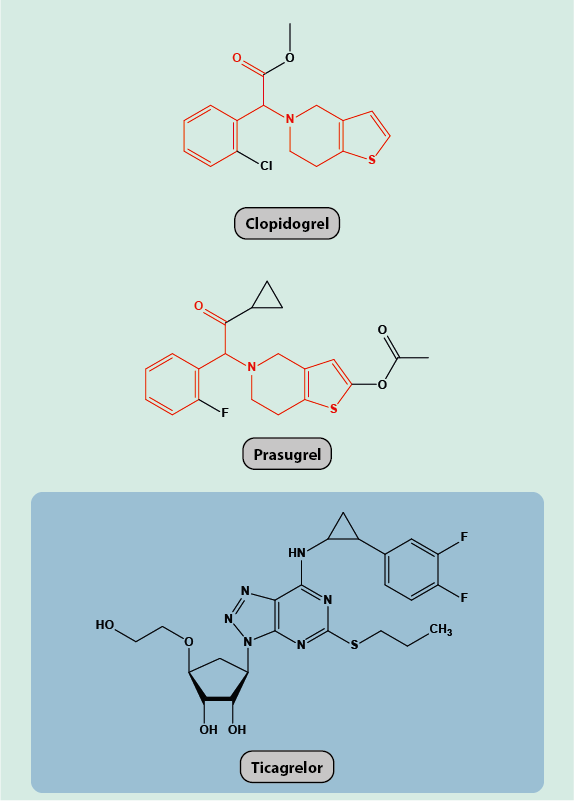Ticagrelor
Ticagrelor is one of several widely prescribed antiplatelet medications, used to prevent thrombosis (blood clots) in arteries and arterioles. A common reason for long-term treatment with ticagrelor is risk reduction for stroke and cardiovascular diseases.

As depicted in Figure 1, ticagrelor belongs to a slightly different class of chemicals, compared with clopidogrel and prasugrel. Its effect is blockage of the receptor protein P2Y12 that is found on the surface of platelets, similarly to the P2Y12 protein blockage by clopidogrel and prasugrel. Blocking P2Y12 prevents the aggregation of platelets and thus the formation of a blood clot. The resulting, most prominent adverse effect of ticagrelor (and other antiplatelet medications) is a tendency for excessive bleeding.
In this regard ticagrelor has very similar properties to those of clopidogrel and prasugrel. However, owing to its different chemical composition and structure, ticagrelor binds to a different region of the P2Y12 platelet surface protein. Clinically, the main difference between ticagrelor and clopidogrel/prasugrel probably is that the ticagrelor mode of binding to P2Y12 is reversible. Hence, if necessary its effect is more easily reverted. This is relevant for a range of oral and maxillofacial surgical interventions, especially for trauma and other emergency situations leading to blood loss.